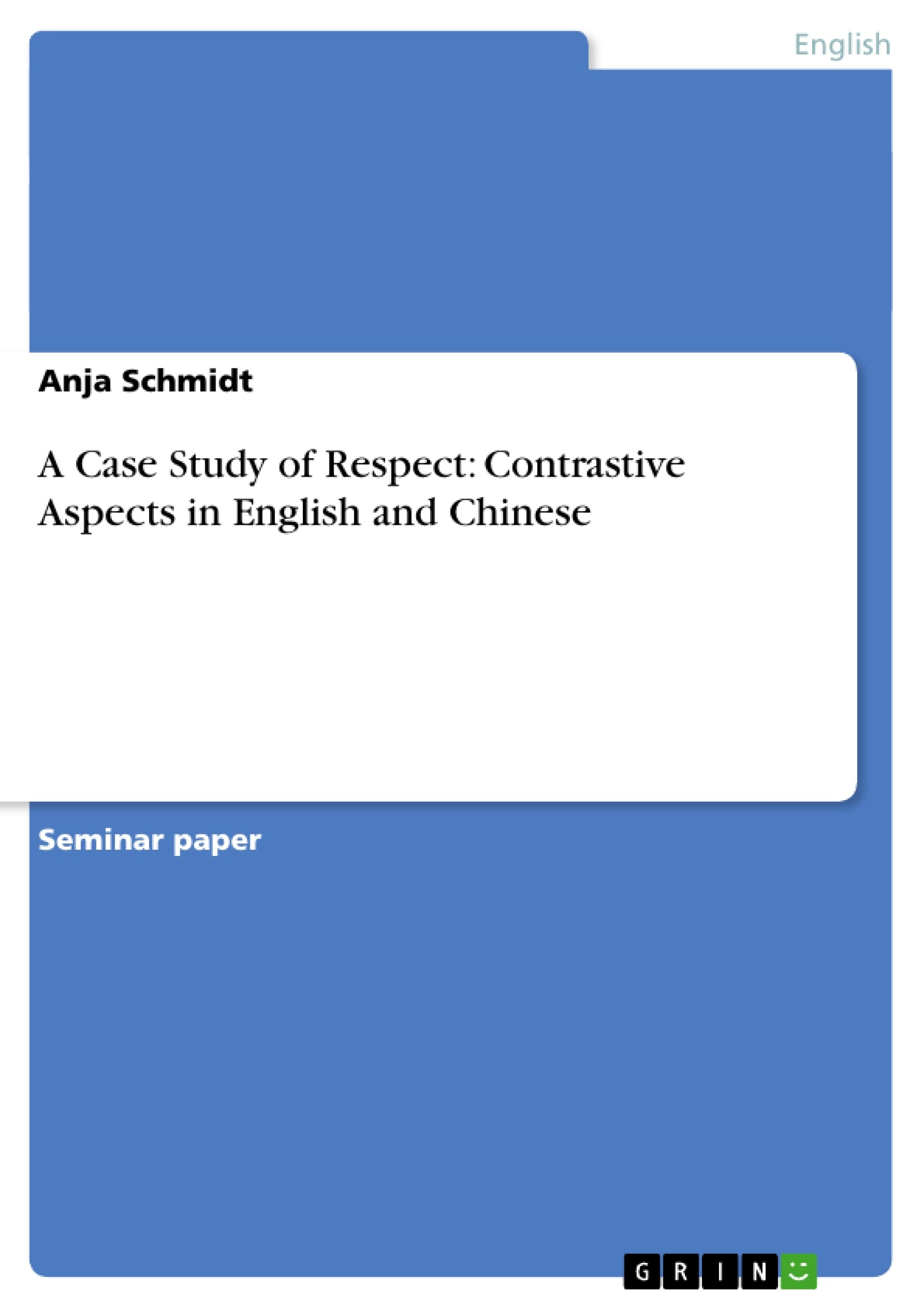One major assumption in the study of emotions is the idea that our understanding of emotion metaphors is, to a large extent, based on bodily experience. Although most evidence for this claim has been found in analyses of the English language, Chinese emotions seem to be conceptualised to a large degree in the same way as in English. Previous studies on the concepts of ANGER and HAPPINESS come to the conclusion that English and Chinese only vary in minor aspects, due to cultural differences. But how about the more peripheral type of emotions? Do these show the same metaphorical preferences? Or are they even more culture-specific?
In this paper I will show the different metaphorical realization of RESPECT in English and Chinese and offer some suggestions as to why these differences occur. For this analysis I have considered a set of about 140 sentences and idioms in English and Chinese. After considering these sample sentences, it will become evident that these two languages most likely follow the same major metaphorical principles. English and Chinese share important concepts such as GOOD IS UP or THE OBJECT OF RESPECT IS A VALUABLE COMMODITY. And this shows in the metaphorized expressions of respect. It seems, though, that Chinese is far more restricted in the use and meaning of these respect metaphors.
Inhaltsverzeichnis (Table of Contents)
- Introduction
- Metaphors of respect in English
- Metaphors of respect in Chinese
- Conclusion
Zielsetzung und Themenschwerpunkte (Objectives and Key Themes)
This paper aims to compare the metaphorical realization of respect in English and Chinese and offer suggestions as to why these differences occur. The study examines a set of about 140 sentences and idioms in English and Chinese, exploring the metaphorical expressions of respect in both languages.
- The metaphorical realization of respect in English and Chinese
- Cultural differences in the conceptualization of respect
- Comparison of metaphorical principles in English and Chinese
- Analysis of specific metaphors related to respect, such as GOOD IS UP and THE OBJECT OF RESPECT IS A VALUABLE COMMODITY
- The influence of cultural factors on metaphorical expressions of respect
Zusammenfassung der Kapitel (Chapter Summaries)
- Introduction: This chapter introduces the paper's topic, highlighting the role of bodily experience in understanding emotions and the influence of cultural differences on metaphorical expressions. It focuses on the specific emotion of respect and outlines the methodology used in the analysis.
- Metaphors of respect in English: This chapter explores the various metaphorical expressions of respect in English, drawing on existing research by Lakoff, Johnson, and Kövecses. It examines key metaphors such as THE OBJECT OF RESPECT IS UP/HIGH, GOOD IS UP, and POWER/CONTROL IS UP, providing illustrative examples from English language.
- Metaphors of respect in Chinese: This chapter delves into the metaphorical realization of respect in Chinese, comparing it to the findings presented for English in the previous chapter. It discusses the similarities and differences between the two languages, highlighting the cultural factors that might contribute to these variations.
Schlüsselwörter (Keywords)
This paper focuses on the metaphorical conceptualization of respect in English and Chinese, exploring cultural differences in the use and meaning of respect metaphors. It delves into specific metaphors such as GOOD IS UP and THE OBJECT OF RESPECT IS A VALUABLE COMMODITY, comparing their application in both languages. The study contributes to the understanding of the relationship between language, culture, and the conceptualization of emotions.
- Citar trabajo
- Anja Schmidt (Autor), 2003, A Case Study of Respect: Contrastive Aspects in English and Chinese, Múnich, GRIN Verlag, https://www.grin.com/document/17322



